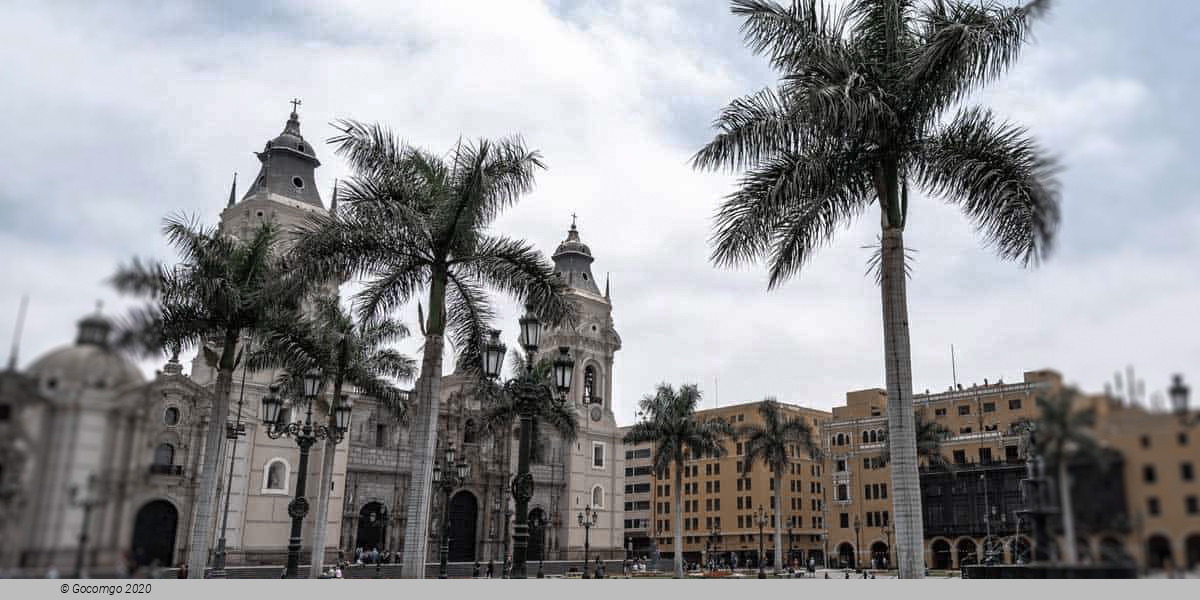Lima

Lima is the capital and the largest city of Peru. It is located in the valleys of the Chillón, Rímac and Lurín rivers, in the central coastal part of the country, overlooking the Pacific Ocean. Together with the seaport of Callao, it forms a contiguous urban area known as the Lima Metropolitan Area. With a population of more than 9 million, Lima is the second largest city in the Americas, after São Paulo. Lima was named by natives in the agricultural region known by native Peruvians as Limaq. It became the capital and most important city in the Viceroyalty of Peru. Following the Peruvian War of Independence, it became the capital of the Republic of Peru.
History
In the pre-Columbian era, what is now Lima was inhabited by indigenous groups under the Ychsma policy, which was incorporated into the Inca Empire in the 15th century. In 1532 a group of Spanish conquistadors, led by Francisco Pizarro, defeated the Inca ruler Atahualpa and took over his empire.
Since the Spanish Crown had appointed Pizarro governor of the lands he conquered, he chose the Rímac Valley to found his capital on 18 January 1535, as Ciudad de los Reyes (City of Kings). In August 1536, rebel Inca troops led by Manco Inca Yupanqui besieged the city but were defeated by the Spaniards and their native allies.
Lima gained prestige after being designated capital of the Viceroyalty of Peru and site of a Real Audiencia in 1543. During the next century it flourished as the centre of an extensive trade network that integrated the Viceroyalty with the rest of the Americas, Europe and the Far East. However, the city was not free from dangers; the presence of pirates and privateers in the Pacific Ocean lead to the building of the Walls of Lima between 1684 and 1687. The 1687 Peru earthquake destroyed most of the city buildings; the earthquake marked a turning point in the city's history as it coincided with a trade recession and growing economic competition with cities such as Buenos Aires.
In 1746, another powerful earthquake severely damaged Lima and destroyed Callao, forcing a massive rebuilding effort under Viceroy José Antonio Manso de Velasco. In the later half of the 18th century, Enlightenment ideas on public health and social control shaped development. During this period, Lima was adversely affected by the Bourbon Reforms as it lost its monopoly on overseas trade and its control over the mining region of Upper Peru. The city's economic decline left its elite dependent on royal and ecclesiastical appointment and thus, reluctant to advocate independence.
A combined expedition of Argentine and Chilean patriots under General José de San Martín landed south of Lima in 1820 but did not attack the city. Faced with a naval blockade and the action of guerrillas on land, Viceroy José de la Serna e Hinojosa evacuated its capital in July 1821 to save the Royalist army. Fearing a popular uprising and lacking any means to impose order, the city council invited San Martín to enter Lima and signed a Declaration of Independence at his request. However, the war was not over; in the next two years the city changed hands several times.
After independence, Lima became the capital of the Republic of Peru but economic stagnation and political turmoil brought urban development to a halt. This hiatus ended in the 1850s, when increased public and private revenues from guano exports led to a rapid development of the city. The export-led expansion also widened the gap between rich and poor, fostering social unrest. During the 1879–1883 War of the Pacific, Chilean troops occupied Lima, looting public museums, libraries and educational institutions. At the same time, angry mobs attacked wealthy citizens and the Asian population; sacking their properties and businesses. The city underwent renewal and expansion from the 1890s to the 1920s. During this period the urban layout was modified by the construction of broad avenues that crisscrossed the city and connected it with neighboring towns.
On 24 May 1940 an earthquake destroyed most of the city, which at that time was mostly built of adobe and quincha. In the 1940s Lima started a period of rapid growth spurred by migration from the Andean region, as rural people sought opportunities for work and education. The population, estimated at 600,000 in 1940, reached 1.9 million by 1960 and 4.8 million by 1980. At the start of this period, the urban area was confined to a triangular area bounded by the city's historic centre, Callao and Chorrillos; in the following decades settlements spread to the north, beyond the Rímac River, to the east, along the Central Highway and to the south. The new migrants, at first confined to slums in downtown Lima, led this expansion through large-scale land invasions, which evolved into shanty towns, known as pueblos jóvenes.

